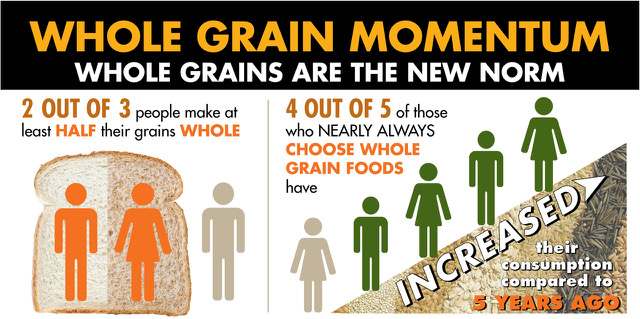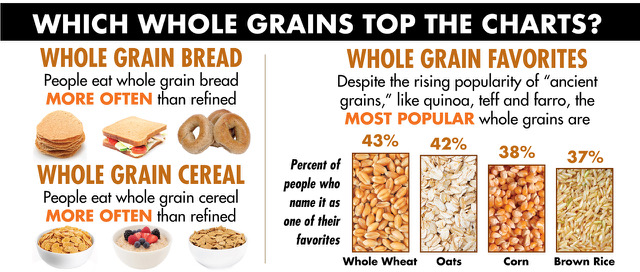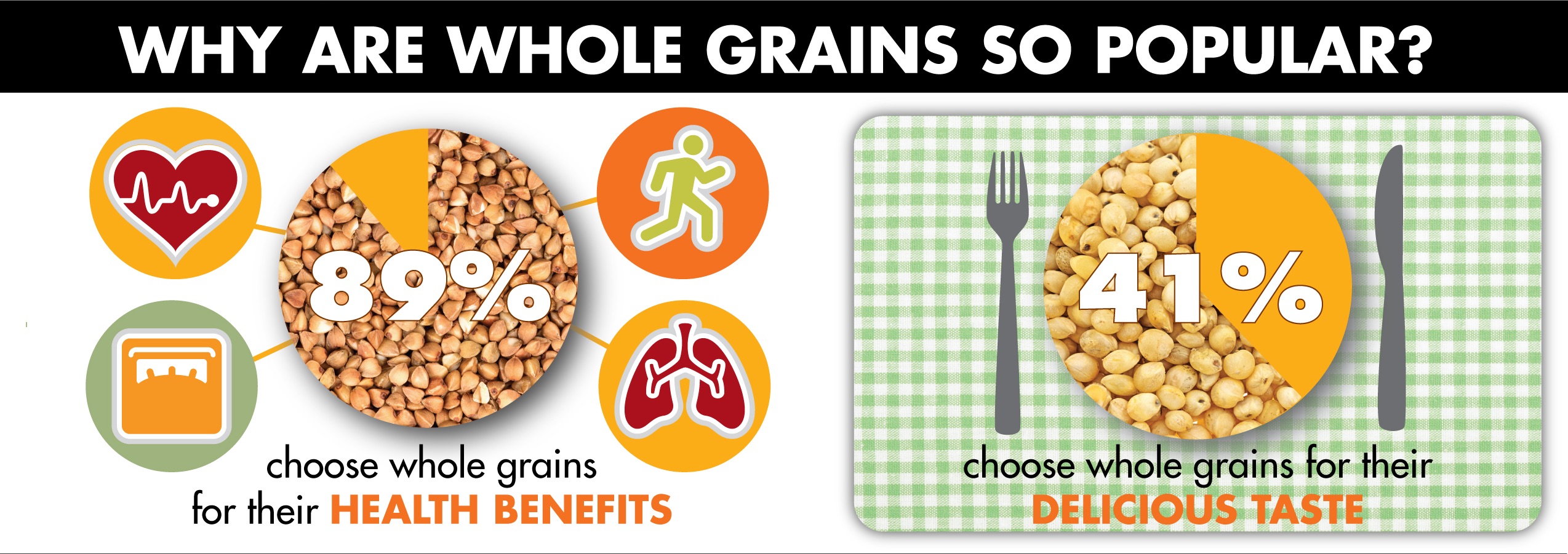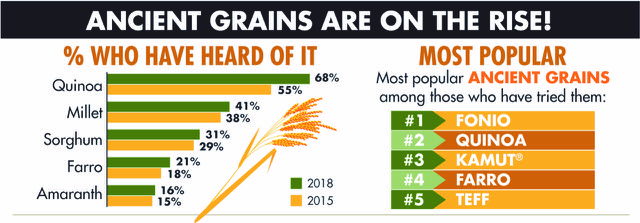Share This
What do Americans know about whole grains? As more people make the switch from refined grains to whole, what motivates them – or holds them back? Have they heard of sorghum, farro, teff? Which grains do they love the most?
In order to learn more about how Americans’ attitudes and knowledge about whole grains have evolved in the last few years since our 2015 consumer insights survey, the Oldways Whole Grains Council teamed up with Qualtrics to conduct a nationally representative online survey. Between July 30 and August 11, we collected data from 1,500 adults who make at least half the food purchasing decisions for their household, and here’s what we learned:
The momentum for whole grains continues to grow.
- Nearly ⅔ (64%) of consumers say they are making at least half their grains whole, with about half of these respondents telling us they go well beyond that, nearly always choosing whole grain options.
- Despite media hype about low-carb and grain-free fad diets, 96% of consumers tell us their whole grain consumption has either increased or is holding steady compared with five years ago.
The whole grains that top the charts are longtime favorites.
- Perhaps the most common questions we get from reporters are those related to the trend toward ancient grains. And yet, when we asked consumers to name their favorite whole grains, the most popular choices remained whole wheat, oats, and corn – which makes a lot of sense when you consider the fact that whole grain bread, oatmeal, and popcorn remain the most popular ways to eat whole grains.
- We asked consumers how often they choose whole grain options when eating a wide variety of food types including bread, pasta, cereal, crackers, and tortillas. Consumption of whole grains has risen significantly since 2015 in almost every category.
There are many factors that make consumers likely to choose whole grains…
- Respondents told us that they choose whole grains for their health benefits, for their great taste, because they are a sustainable food choice, and because they are competitively priced.
… and a few things that remain barriers to whole grain consumption.
- While many see whole grains’ taste as a benefit, others (42%) aren’t accustomed to the fuller, nuttier flavor yet. There have been efforts in some places to price-match whole grain options with their refined grain counterparts, but cost still remains a barrier for some (36%), as does availability in stores and restaurants (32%).
The trend toward ancient grains is gaining momentum.
- Three years ago, we asked consumers to tell us which grains they had heard of, which they had tasted, and which were their favorites. Since then, consumer recognition of many ancient grain varieties (including quinoa, millet, sorghum, farro, and amaranth) has risen.
- One of the surprises our survey results turned up was that for those consumers who have tried it, fonio (a grain we blogged about back in April) tops the list in popularity. People who try it absolutely love it! Of course, quinoa, the grain we expected would win the popularity contest, came in close behind in second place.
There is a lot of confusion about gluten.
- While half of Americans have some idea what gluten is (selecting one of the two correct answers on our survey), only 6% correctly identified gluten as both “a protein found in wheat, barley and rye” and something that “helps bread dough stretch and rise” (and didn’t select any additional incorrect answers).
- Although one quarter of respondents told us that they’ve “cut back” on gluten, 94% of people say they eat gluten some or all of the time.
- 1.13% of all respondents told us they avoid gluten entirely due to a medical diagnosis – which lines up with the estimated prevalence of celiac disease in the general population.
Awareness of the Whole Grain Stamp is up and consumer confidence about the information it provides is stronger than ever.
- Awareness of the Whole Grain Stamp has grown steadily since its introduction in 2005. In 2007, 20% of consumers said they recognized it, and in 2012, this figure had risen to 33%. When we ran our 2015 survey, awareness of the Stamp was up to 49%, and this year it reached 53%.
- More than 4 in 5 people (83%) trust the Whole Grain Stamp to be accurate and honestly represent the gram amount in the product. And 78% of people say they would use the Stamp as part of their purchasing decision, though 2 in 5 people would also look at other factors like sugar and sodium.
Have you tried fonio yet? Heard of farro? What drives you to choose whole grains… or gets in the way of your best intentions? Do you look for the Whole Grain Stamp when you shop? We’d love to hear from you in the comments below! (Caroline)
See our full infographics about WHOLE GRAIN MOMENTUM, and SELLING MORE WHOLE GRAINS.






Comments
Add a Comment